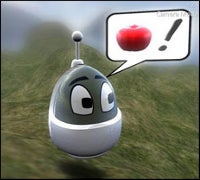 |
| Microsoft Research’s Rick Rashid Source: Microsoft |
LOS ANGELES — Since its founding in 1991, Microsoft Research has produced a number of technologies that have gone on to find their way into key products for the company. Today at Microsoft’s Professional Developer’s Conference, the group used the event’s final keynote to show what might be ahead in future offerings.
While Microsoft Research has played a role in developing everything from Microsoft Windows 95 to Xbox Live, the group’s head, Rick Rashid, has his own notable legacy, having developed the Mach microkernel back in the 1980s.
Almost 30 years later, Rashid’s technology lives on in innumerable systems — including Apple’s Macintoshes and the iPhone.
“If you had told me 25 years ago that something I was working on at the time would wind up in a cell phone, my reaction would have been ‘What’s a cell phone?'” Rashid told the audience. “It just shows that things survive and get used in funny ways.”
Mach found its way into numerous Unix operating systems, including NeXT Computer’s NextStep. NextStep ultimately served as the basis for Apple’s Mac OS X after the company bought NeXT in 1997 — a move that also returned its CEO, Steve Jobs, back to the helm at the iconic PC maker he founded.
Microsoft Research has similarly high hopes — if potentially less ironic — for its newest crop of technologies, a number of which Rashid and his team showed off during his presentation.
Researcher Feng Zhao kicked off the group’s first demo, a project called SensorMap that uses environmental sensors in connection with mapping technology. In the demonstration, Zhao showed off heat sensors that were set up around the Los Angeles Convention Center, where PDC is taking place. He showed the placement of air conditioning vents and how well cooling spread throughout the building.
“The information gives us opportunities to optimize where to place a computing-intensive workload,” Zhao said. “This is just one example of how we can make our datacenter more energy-efficient.” He added that Microsoft will be using SensorMap heat sensors in all of its datacenters to maximize their cooling efficiency.
Zhao also said that sensors are being deployed to the Alps to monitor climate change, and that NASA is using SensorMap and Microsoft’s VirtualEarth online map to monitor the weather in Juneau, Alaska.
Rashid then talked about how Microsoft Research is applying computation to health research, in an effort to create graphical models into searching for an HIV vaccine. However, they said the task was difficult because the HIV virus mutates so fast.
He then showed a video featuring researcher David Heckerman, who was using techniques originally designed for filtering spam — which has a tendency to mutate to escape detection — to help understand how HIV mutates. The work could help inform the group’s strategy, they said.
 |
| Microsoft Research’s Boku project Source: Microsoft |
Rashid also showed a video discussing an update to Microsoft’s “World Wide Telescope” project. The project, similarly to Google Sky and Google Moon, gathers images from ground and space-based telescopes, making it easier for amateur astronomers to make their own observations and search pictures taken of the visible universe in a variety of exposures.
Another demo showed off Boku, a “compiler” for teaching children the concepts of programming. Rather than focusing on writing code, the Boku uses constructs and objects that are represented by pictures, while actions are defined by drawing arrows. “Programming” through Boku is done on an Xbox 360, using just the controller for input — something definitely new in the world of programming.
The final demo was SecondLight, an upgrade to Microsoft’s Surface touchscreen tabletop PC design. SecondLight embeds a second, hidden image into Surface’s main display, which can only be seen when projected translucent screens held above the device’s surface.
 |
| Microsoft Research’s SecondLight project. Source: Microsoft |
The upshot? A user can hold a piece of translucent material over the display to reveal additional information on an image. For instance, Steve Hodges of Microsoft Research in Cambridge, England, demonstrated the effect using a mere sheet of paper held over a SecondLight flat screen.
SecondLight uses a projector mounted underneath the tabletop screen, along with and an infrared camera on the table. This allows for a secondary image to be projected along with the first without interfering with each other.
PDC concludes its final sessions tomorrow.


